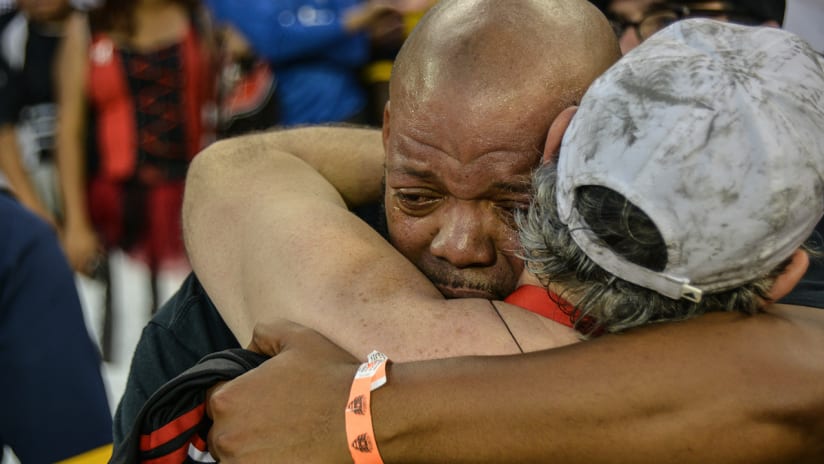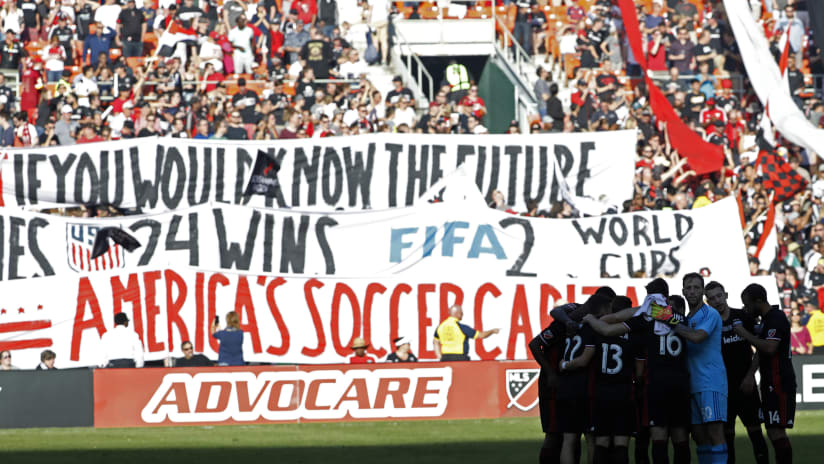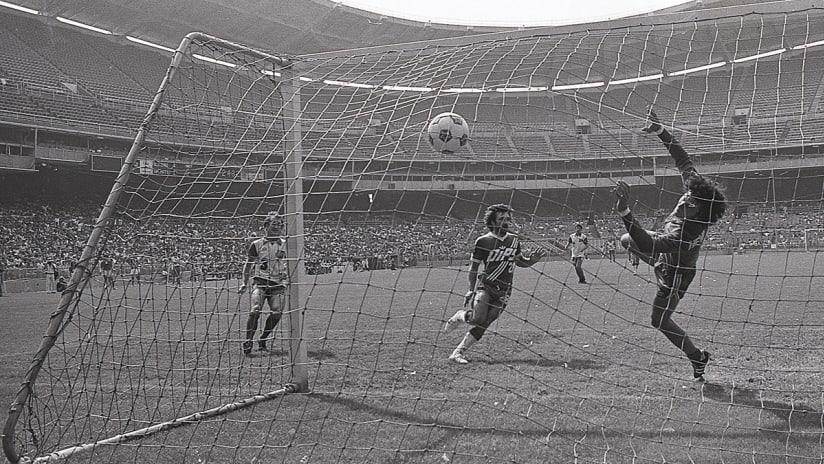One of Major League Soccer’s founding clubs closed the book on a truly iconic era on Sunday, as D.C. United played the New York Red Bulls in their 347th and final regular-season match at Robert F. Kennedy Memorial Stadium.
The last remaining venue from the league’s inaugural 1996 season still in MLS use today, RFK was dank and dingy, but a beloved home for the most successful club of MLS’ early years and the loyal supporters who made it a cauldron of noise and spectacle.
On Sunday more than 41,000 souls made one last trek out to the old lady on East Capitol Street, many of them traveling from across North America, for the chance to reunite with old friends and say goodbye. This is one final look at RFK through their eyes.
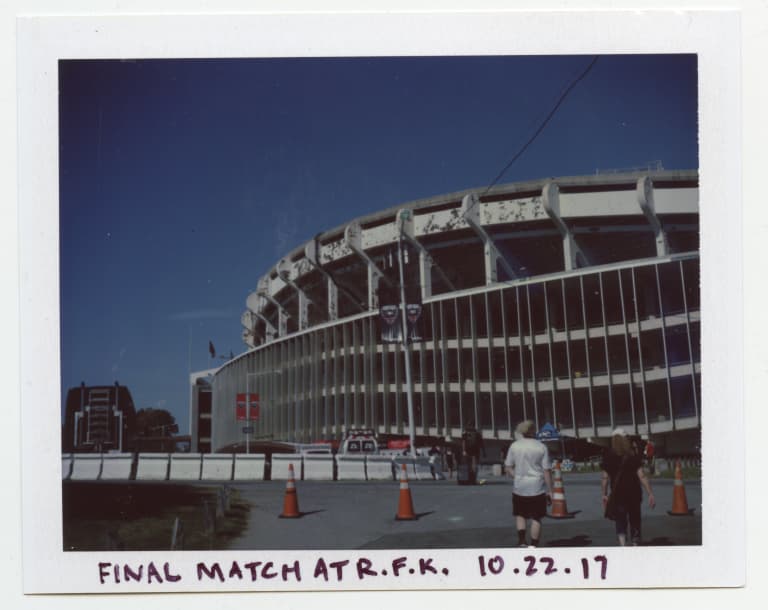
SUNDAY, 10 am ET – RFK parking lot gates open
What’s almost as near and dear to the hearts of D.C. United’s hard-core fans as the stadium itself? The famous tailgating traditions of Lot 8, a ritual that dates back to the team’s earliest days. With RFK surrounded by acres of asphalt, any pregame trip to a pub involves lots of walking – and many of the Black-and-Red’s supporters drive or ride Metro from the Maryland and Virginia suburbs anyway.
So for more than two decades, thousands of them have gathered in the parking lots to eat, drink and be merry before trooping through a tunnel underneath Independence Avenue SE and entering the stadium. On this historic day, Lot 8 is already packed under a warm sun some six hours before kickoff, with music blaring, grills smoking and many beers, spirits and stories being shared, especially among the members of supporters clubs like the District Ultras, Barra Brava and Screaming Eagles.
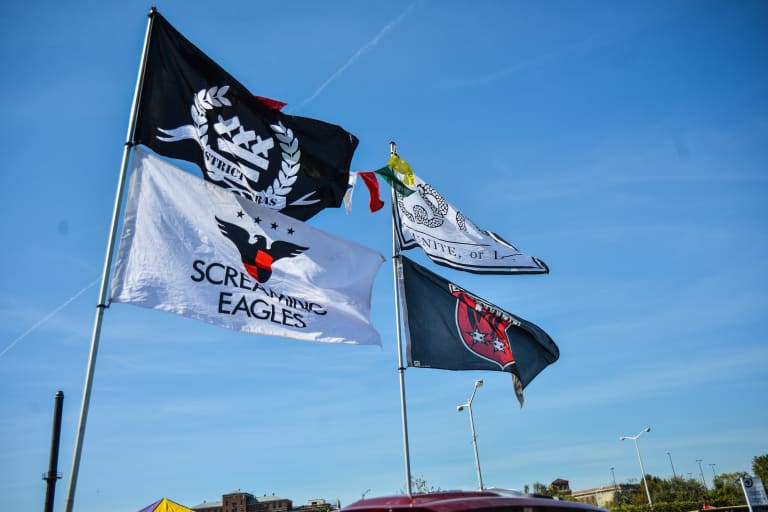
“My father brought me to Diplomats [NASL] games in high school, when my childhood idol Johan Cruyff was playing – that was a really big thing that hooked me to RFK from that point on,” says Screaming Eagles president David Goodwin as he and his fellow old-timers reminisce about the founding days of their group.
Long known for their prominent place at midfield on RFK’s “loud side,” the Screaming Eagles actually began as a much smaller crew behind the north goal in ‘96. Then they started buying up season tickets in the section they currently occupy, reasoning that it would empower them in their efforts to build the devoted supporter culture that is so common across MLS today.
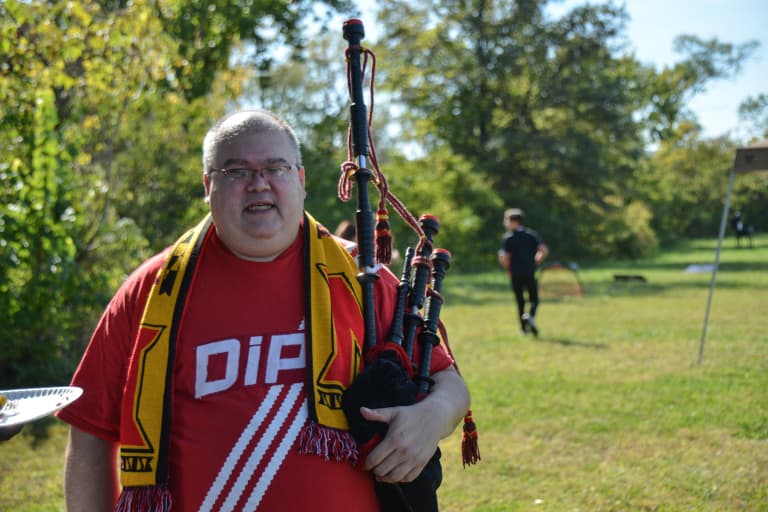
“I was strong-armed by David into making the decision,” jokes founder Matt Mathai. “It wiped out our reserves. I mean, we were down to $150 in the kitty after buying the front row of the section. Because we figured they could throw us out if we weren’t season-ticket holders.
“The team was the first one in the league to completely give up control of prime seating and hand it to the season-ticket holders – us, in this case – at a discount.”
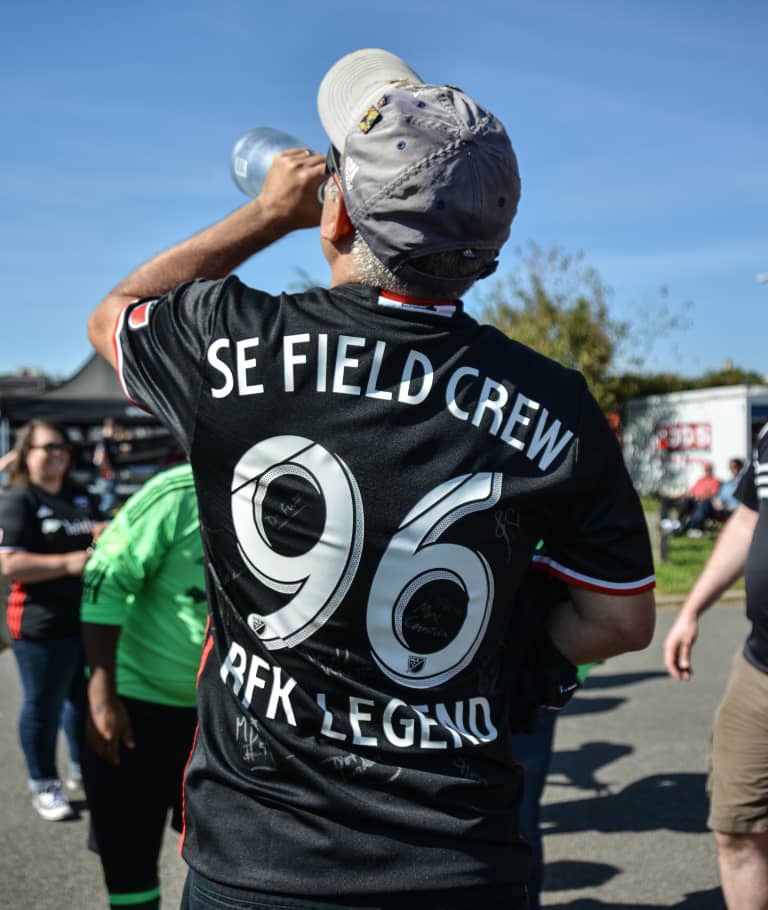
Paul Sotoudeh, another long-serving and influential leader, is presented with a customized jersey that reflects his role as the Screaming Eagles’ gameday operations coordinator, along with a bottle of Hpnotiq liquor, a tongue-in-cheek reference to a wild tailgate of years past. Naturally, he passes the booze around, prompting grins and grimaces alike, until it’s empty.
“It’s extremely easy for me to trace all of the good things in my life to D.C. United,” says Ben Owen, a season-ticket holder since 2010 who credits his fandom for introducing him to his wife, his job, one of his first apartments in the area and most of his network of friends. “I’ve felt every emotion that a human can feel in this building, and I’m probably going to feel most of them today, and I’m very, very excited about it.”
11:30 am ET – South end of Lot 8
It’s just a bit rowdier at the Barra Brava tailgate, where a DJ blasts out his set as the group inspired by Latin American hinchas knock back beers and pass out grilled meats from the parrilla.
It’s no less emotional, though. Barra founder Oscar Zambrana greets old friends and toasts departed ones as the reality of the occasion begins to set in.
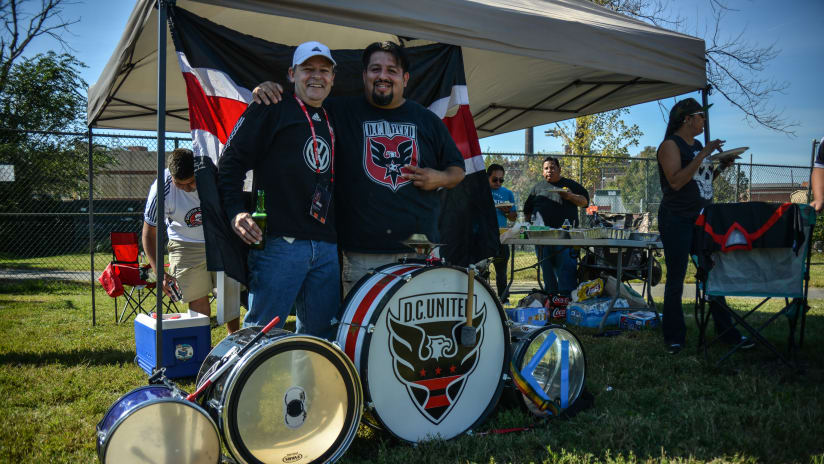
“We were an example that every other club in MLS followed, not just for the four championships that we won, but for the passion we all showed.”
“People don’t understand what’s been created here,” interjects Everett Squire, a strapping Air Force airman and Barra member who flew in from Ft. Worth, Texas for today’s game. “It crosses borders, crosses ethnicities, it crosses nationalities, skin color, race, creed, religion and all of that.
“Every time that I’ve deployed – to Afghanistan, wherever – I always bring a Barra Brava flag and a D.C. United flag with me,” he adds. “I had them flown during a combat mission in 2010 in Afghanistan. So it’s deep, man. It’s deep.”
Few can confirm that sentiment more movingly than Rob Gillespie. Another old-timer, he’s been severely afflicted by painful bouts with leukemia and relocated to Oregon in recent years for intensive medical care as his condition worsens. But his Barra friends passed the hat to make sure he didn’t miss this finale.
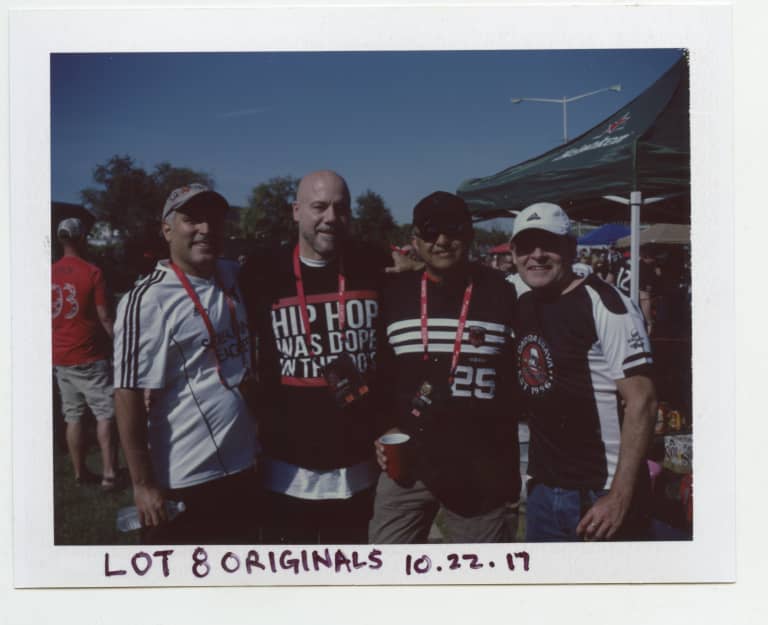
“The Barra brought me out here. I begged my doctors,” he says, leaning occasionally on his walker. “I am so blessed and humbled to be here. What I have is incurable, but I get up every damn day and keep fighting. Unfortunately I'm on kind of a downward slope, but you never know – they could find a cure tomorrow. I get up and just keep going every single day and the people in this parking lot are a big part of that for me. I moved 3,000 miles away and people still check up on me weekly, daily.
“You know, I think about folks like Chico who were here at the beginning and aren't here now and it's, for me personally, it's been so affirming because I've been sick. To be back within the family, I've been overwhelmed and had to just sit down earlier because of all of the emotions. My son was raised in this lot, at these tailgates. This was our life for 20 years.”
A stir goes through the crowd as a few other familiar faces walk up to pay their regards: Kevin Payne, United’s founding president and CEO, accompanied by legendary midfielder John Harkes and former assistant coach Dave Sarachan.

“It's a special feeling everybody has about this club,” says Payne, who also worked for Toronto FC and the LA Galaxy, and a range of other clubs during his stint with Anschutz Entertainment Group. “It's different than most other clubs in our league. It's moving and very emotional for me to come here with the Barra Brava and the Screaming Eagles, the fan clubs that began the whole supporter culture in MLS long before anybody else was doing it.”
In a quiet, fleeting aside, Harkes turns to Sarachan.
“Without these people,” he says, “we’re nothing.”
2 pm ET – Fieldside, RFK Stadium pitch
United scheduled a full weekend of events to commemorate what the club dubbed #LastCallatRFK.
But the “Legends Game” is what sparked the most excitement – an exhibition match before the MLS game, with invitations extended to any player who ever wore the Black-and-Red, as well as several ex-Washington Diplomats, United’s NASL forbears.
Famous names from the club’s past like Harkes, Etcheverry, Moreno, Stoichkov and Adu take the pitch one more time, and the likes of Sarachan, Bruce Arena and Thomas Rongen prowl the sidelines again, too. Even current coach Ben Olsen sets aside his duties long enough to don the colors and wreak a bit of havoc along the right flank.
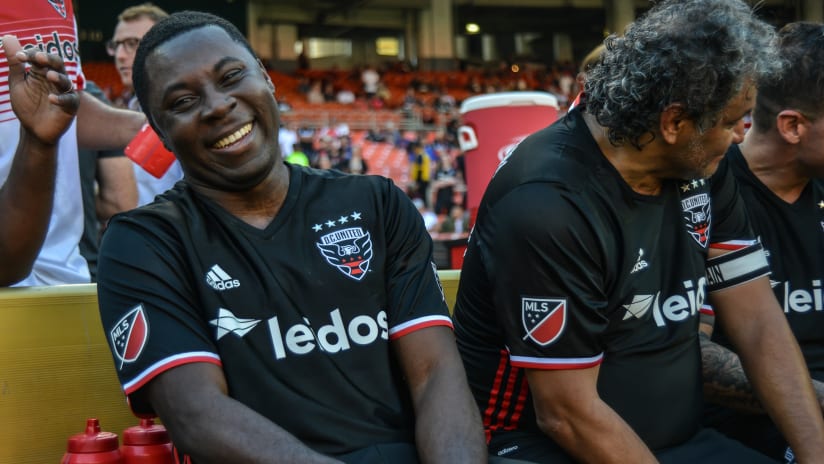
“The tunnel [from the locker rooms] is dark, and the light starts to come towards you – not like you’re dying, but all of a sudden it just opens up and here you are,” says Rongen, who coached D.C. from 1999-2001 and later served as an analyst on their television broadcasts.
“I had the same feeling in 1980 when I was playing for the Dips, when I’m walking behind Johan Cruyff and I’m still pinching myself, in front of 60,000 people against the Cosmos. And the same feeling I have today as well … I had butterflies today. I’m not even coaching or playing, just the anticipation of what’s going to happen and how there’s going to be 40,000 people and the way it builds and this bittersweet kind of thing.”
While some fans can’t help but linger outside at the party in Lot 8, several thousand others file in early and cheer warmly.
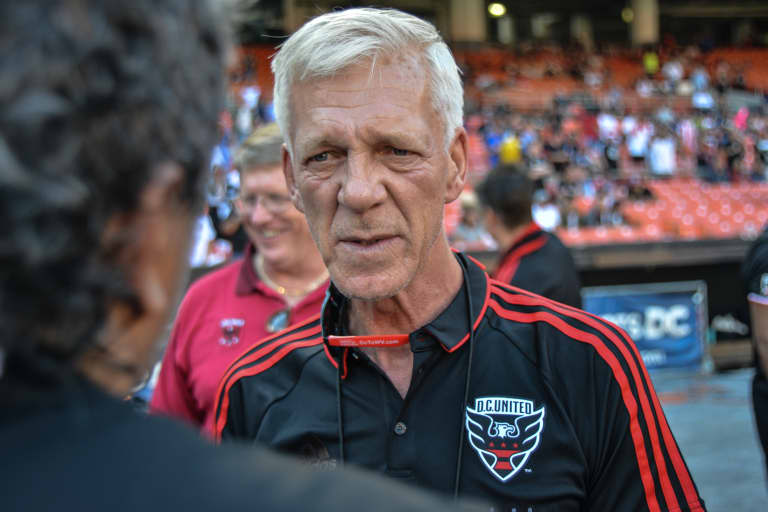
“The start of this thing was very challenging in 1996, and somehow we managed to move the club along during the season and be successful on the field, and build a culture,” says Arena. “And the three years I was here, it was fantastic – we had great players, won a lot of things, but really, I thought, built a great foundation for the club … This is such a great community for this sport.”
Arena is fresh off what’s likely the biggest setback of his professional career, the US national team’s painful failure to qualify for the 2018 World Cup. But he’s still hailed by fans at RFK who appreciate his role in D.C.’s early glories.
“I remember us sharing it with the [NFL’s] Redskins in the first year, thinking that it was a little bit old at the time, never thinking that it would still be around to this day,” he says. “It’s time to go.”
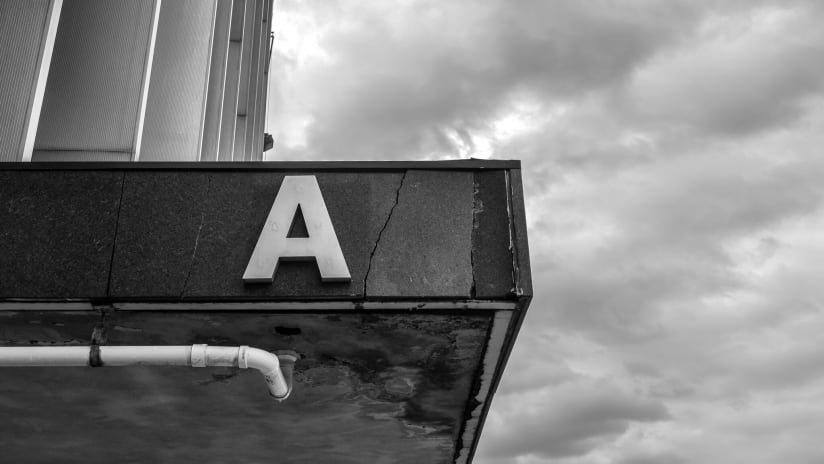
3:05 pm ET – RFK’s subterranean hallways
The Legends Game’s old-timers are scurrying about in the tunnels leading to the home dressing room, and the security guards that keep watch over those dimly-lit hallways have taken note.
“Is Roy Lassiter in here somewhere?” says one, flipping through a commemorative program. With a little over an hour till kickoff, they have time for a chat.
“I’ve been here since 2007,” says Ronald Brogsdale, clad in a bright yellow windbreaker and dark pants. He motions to Joseph Knight, who keeps a watchful eye over the referees’ locker room. “He’s been here since, well, since before D.C. United. Since the [local NFL team] played here.”
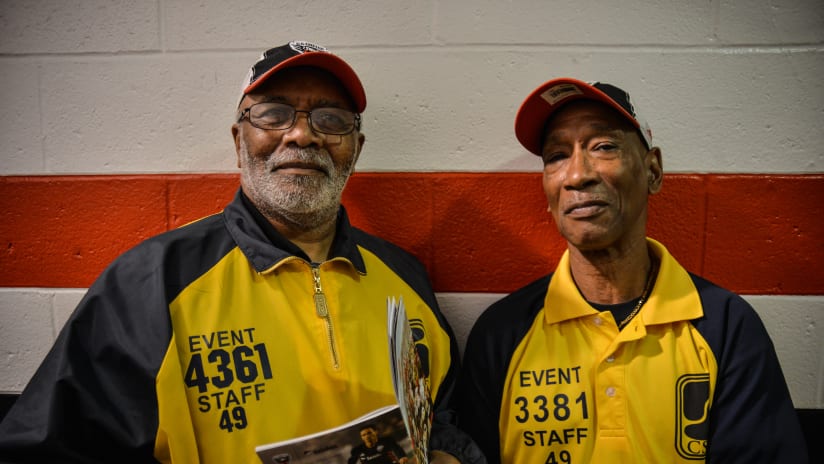
United winger Paul Arriola rounds the corner into view, in his gameday best. He’s a newcomer to this squad, but makes a detour to give Brogsdale some dap, pulling him in closer for an embrace. It’s a sight that repeats itself over and over again. As players arrive to punch the clock, Brogsdale is there to welcome them. Not a single player walks by without extending a hand.
Some time later, this ritual will repeat itself as the players take the field. Just moments before they emerge from the dugout at RFK, players will file past Brogsdale, each of them bumping his fist as they pass. “Alright now,” he says. “Let’s do this. Let’s get them.”
“This place is about history to me,” says Brogsdale, a D.C. native born 10 years before RFK opened. He grew up not far from here. “It’s about fun, it’s about family. More than anything else, it’s about seeing not just one nationality but a bunch of different people, people that come from different parts of this country and world, that’s the fun part. To learn different languages, to meet different people.”
But it’s all business for Brogsdale on game day. If you ask him, he’ll tell you he considers himself to be a member of the team, in some honorary sense. He may just be the club’s low-key hype man.
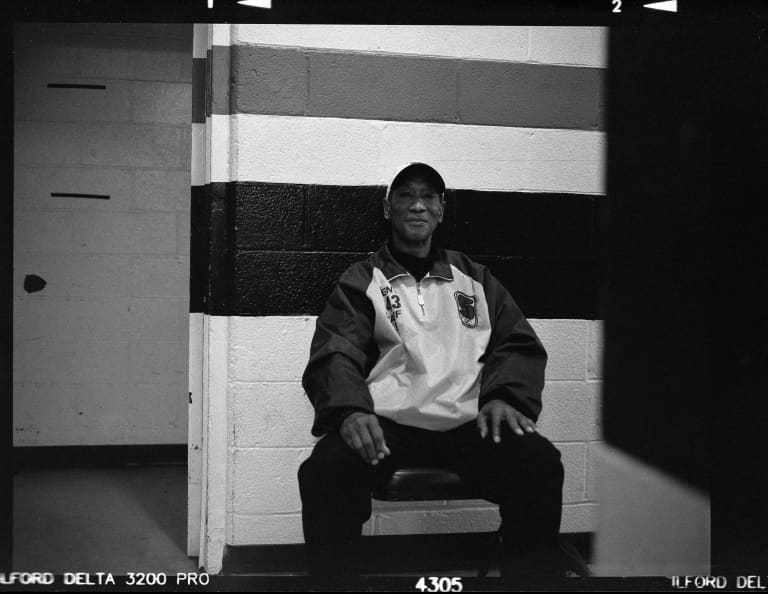
“By being an athlete myself in school – I played the other soccer, I played football – I always say you have to have passion for whatever you do in sports. If you don’t have passion for that game, for your teammate, your partner next to you, then you just won’t succeed.
"It takes me way back to see these kids,” he adds. "They’re inspired, they love what they do.”
And so does Ronald. At the moment though, neither he nor Knight seem sure that they’ll keep their jobs after the move to Audi Field. If the contractor he works for doesn’t get the gig at the club’s new digs, he’ll make do.
“I may just go and walk into the front office there and apply for a job myself.”
3:35 pm ET – Francisco Tobar’s office
Deep in the old facility’s windowless bowels sits the United player’s lounge, an auxiliary space of sorts that’s been converted into a locker room for the Legends Game participants.
Walk through a door in the corner of the room and you enter Francisco Tobar’s small office, its walls packed from top to bottom with team photos, advertising posters and other totems from the club’s storied past. He calls it “a memory room,” a place that helps anchor the organization to its roots.
He’s rarely in the spotlight. But the man many at United just call “Cisco” is one of the most important people on staff.
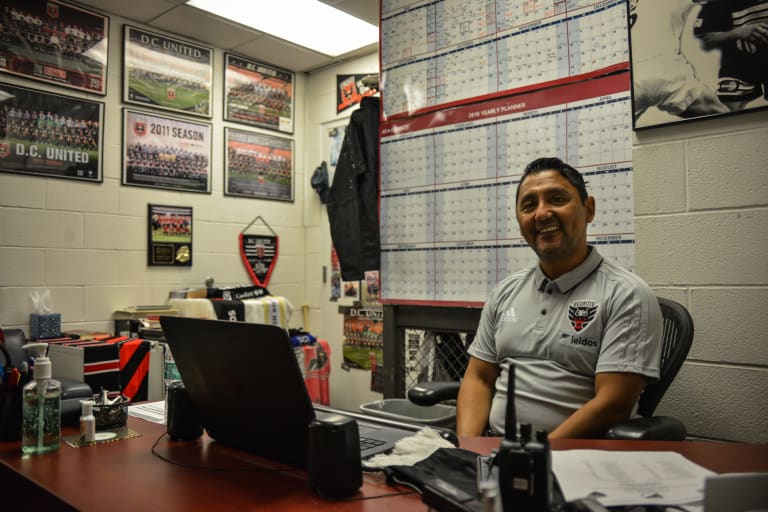
A gameday volunteer in D.C.’s earliest years, the Chilean-born Tobar eventually earned a chance to serve as the equipment manager in 2003. A few years later he rose to team administrator, then to his current post as director of team operations, where he supervises a broad range of tasks from road trip travel plans to tactical communication with Spanish-speaking players to uniform details and much, much more.
Few employees arrived at RFK earlier than him this morning, and fewer still have a more profound perspective on this day.
“We wanted to make it as special as possible for these legends coming back,” he says as the old-timers shower and change nearby. “A lot of them haven’t played in a long time, so we wanted them to have that experience of being back at RFK, being back and seeing their locker room with their nameplate, their jersey, and just kind of get that feeling of ‘Hey, we care about you.’”
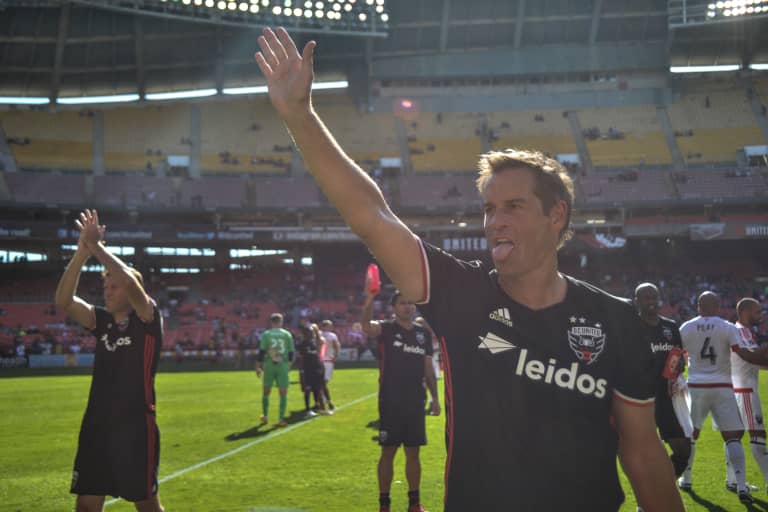
After the first team trots out for pregame warmups about 45 minutes before kickoff, he reflects for a few quiet moments on “that family feel” that sustained him and many others over the decades.
“We’ve always talked about tradition, family, and that’s all off the field – what happens on the field is sort of like a bonus,” says Tobar. “And seeing all these guys coming back today – all that coming together, coming to an end, sort of closing a chapter, closing a book, but yet allowing us, because of that book, to write a second version of it, a second book, a continuation.
“Major League Soccer is nearing a new position, getting bigger and better all the time, but we’re one of the original clubs that helped create this. So we want to remember that. We want to make sure that we know where we started, where we came from. And although we have a long way to go, and we understand that, we don’t want to forget what’s been done before. So that’s what today was all about.”
4:30 pm ET (11th minute) – Behind RFK’s north goal
In a place that’s seen the likes of Pelé and Cruyff, a place that’s hosted World Cup matches and MLS Cups, a place once graced by John, Paul, George and Ringo, Tony Quinn is the real legend.
His lens has been trained on nearly everything that’s happened at the place for 40 years. Tony came to RFK in 1976, pulled into the fold by charismatic Diplomats striker Paul Cannell.
“I was cutting hair at the time,” says Quinn between bursts of his shutter. From behind the ad boards, he tracks the action as it heads across the midfield stripe towards the far end of the field, then pulls away for a moment.

Quinn has long since set his scissors aside. He’s now widely regarded as one of the top soccer photographers in this country, maybe the very best.
“Today has been like going back to my childhood, to Christmas Eve or something – I couldn’t sleep last night,” he chuckles. “Just thinking about today, I was just sort of making sure I had everything right. I knew I’d have so many things to do.”
A hundred or so feet above him, a large throng of traveling Red Bulls supporters hop up and down. Just to his left, the District Ultras are in full voice. “Just to see the upper deck full again. It’s like everybody says – you hate this place or you love it, but there is just nothing else like it.
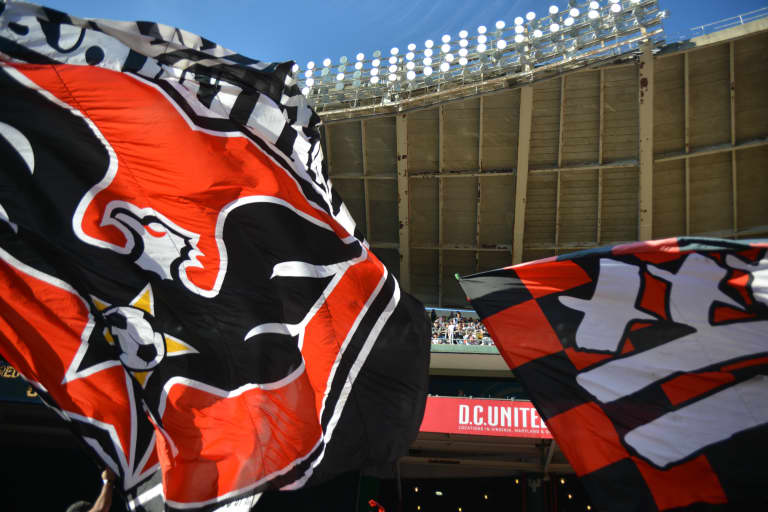
“For me, I think the most memorable moments here were the ’94 World Cup, and probably the first D.C. United home game,” reflects Quinn. "I’d been out in San Jose for the league opener. And to come back here not knowing what to expect – to see all the people that showed up was amazing.”
After 40 years, Quinn makes shooting a game look effortless. It’s a far cry from where he started, lugging around a massive telephoto lens, stopping every now and then to load a fresh roll of film into his camera. In binder upon binder of negatives in the basement at his home a few miles away in Maryland, the history of the game in this country comes alive. They are all there, from international greats to domestic legends to absolute nobodies.
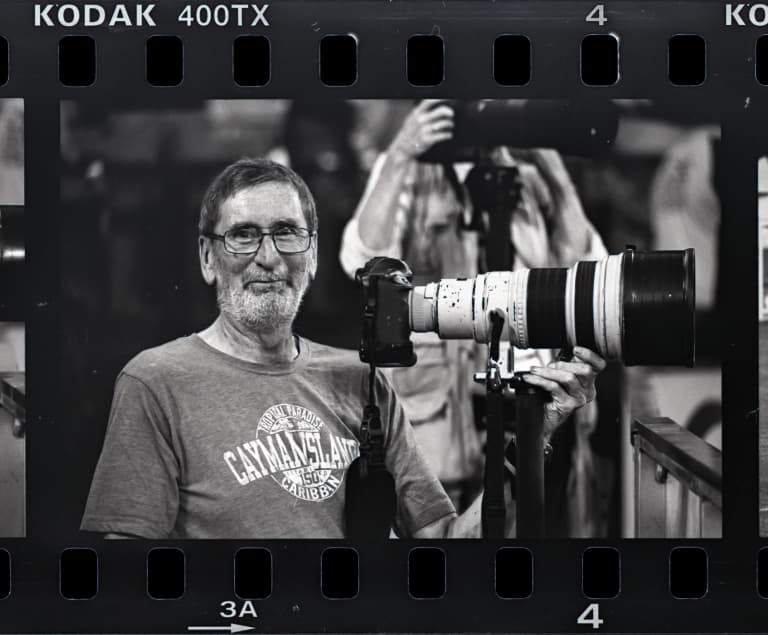
And there are boxes of other photos, too, photos we’ll never see, some rowdy and raucous moments shared between a club photographer in the 1970’s and his friends, many of whom played for the team itself. Times were different then.
None of this success has really gotten to Quinn’s head, a fact that’s made him beloved to many. After all of these years, his wit remains as quick as his shutter. He is not a man you can spend a lot of time around without laughing. Ask any D.C. United employee about him and you’re likely to get a wry smile out of them. “I love Tony,” they usually say.
Back to work. A smoking flare lands 30 yards or so to Quinn’s right.
“I’ll miss this place,” he says. “Oh yeah. It’s a big part of me."
5:03 pm ET (45th minute) – RFK’s “loud side”
A fierce, fire-and-brimstone first half between two longtime rivals has nearly petered out as halftime looms. But United playmaker Luciano Acosta lights the fuse again in the dying seconds with a pinpoint cross from the left wing that Arriola lashes home on the full volley, earning the home side a 1-0 lead heading into the break.
RFK’s east stand, known as the “loud side” thanks to the supporters groups who call it home, bursts into loud, wet euphoria as – per tradition – fans throw their beers into the air in celebration.
The resulting din is sweet music for Sotoudeh and the rest of the capos leading the chants and cheers. Asked about his favorite such memory, he, like many United fans, recalls the wild Eastern Conference Championship win over New England at RFK that propelled D.C. towards their fourth, and most recent, MLS Cup title in 2004.
“I think it’s kind of like doing a drug or something – you’re always chasing that high? I think we’re still chasing that,” says a hoarse Sotoudeh. “We want that again. I want to see that for every match – and it’s obviously not going to be like that every match, but you want to try and get there.”
6:05 pm ET (90th minute) – Northeast corner of RFK’s lower bowl
The Red Bulls have roared back to seize control of the match, assisted by the rash kick to Alex Muyl that earned the combustible Acosta a straight red card and left his team down a man. But the noise has only grown as time ticks away on United’s final day at RFK, the loud side sending waves of sound around the 56-year-old bowl.
The use of “pyro” like smokebombs was tolerated in the stadium in D.C.’s early years, but more recently banned, ruled a violation of RFK’s safety regulations. That’s never sat well with some hard-core supporters, and as Sunday’s match reaches the 90th minute, clouds of smoke and an unmistakable burning scent waft out from several sections.
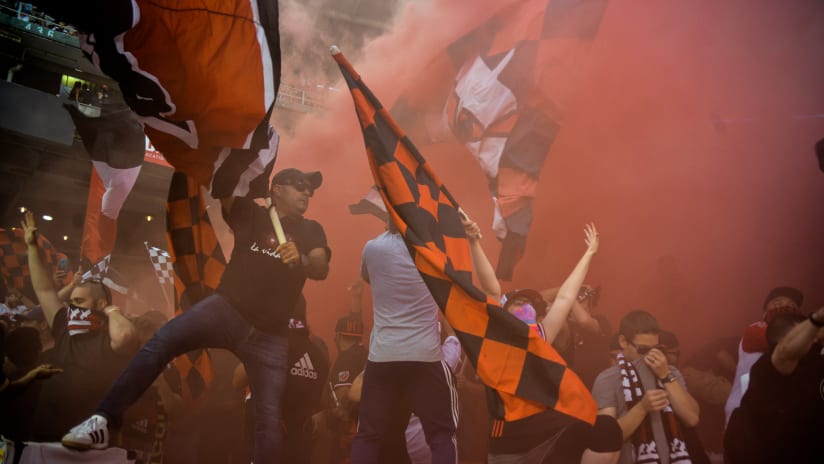
Security officials wade into the crowd to confiscate the pyro and extinguish it, but more is popped within moments, sending thick clouds of red smoke out over the field. Up in the upper deck, the Red Bulls faithful are of a similar mind, their dancing ranks – one fan dressed in a full raccoon suit in a snarky nod to RFK’s unofficial mascot – lit up by the red incandescence.
Both sides of the Atlantic Cup rivalry are in violation of stadium policy, but the rules are flouted on this final day, nearly overwhelming the frazzled security staff. A similarly mischievous spirit leads some overeager fans to yank the bottoms of their seats off and hold them aloft.
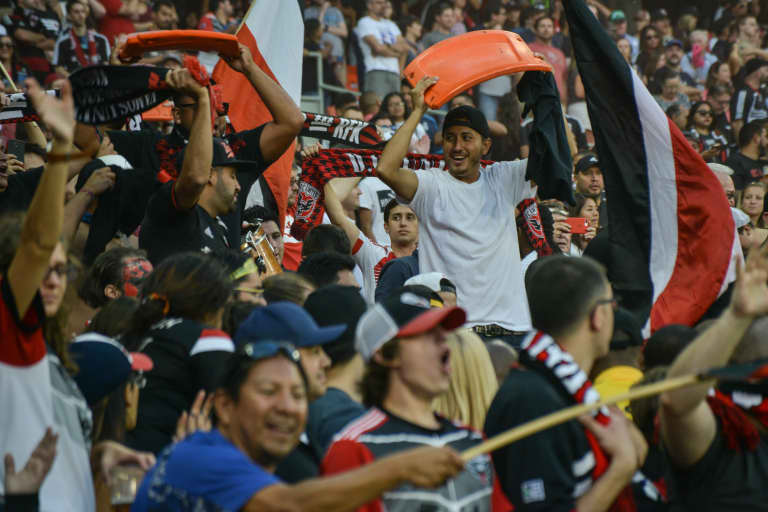
Fans with RFK seats. PHOTO BY: Pablo Maurer
When referee David Gantar blows the final whistle on a 2-1 RBNY win, only a modest scattering of spectators file towards the exits. The chanting continues as United players and coaches past and present walk out to midfield with their families for a postgame ceremony – one final goodbye.
6:35 pm ET – Hallway outside visiting locker room
Red Bulls head coach Jesse Marsch once played for D.C., a young reserve midfielder on Arena’s teams who moved on to make his name at Chicago and Chivas USA. So there’s a gleam of nostalgia in his eyes as he speaks to the media postgame, even when he professes his frustration with what he saw as lax refereeing of the physical encounter.
“As big as it was for D.C. and their fans, it was big for our supporters too,” he says. “This rivalry has a 22-year history, and they wanted to be here for the last time, too. And for us to be able to send them off with a victory, I think will make them feel really good. It makes us feel good as a club… I wouldn’t be surprised to see us on the schedule for the first game that they open it up [Audi Field].
“This was the first dynasty, and I was proud to be a part of it,” he adds. “It’s special. it’s really special.
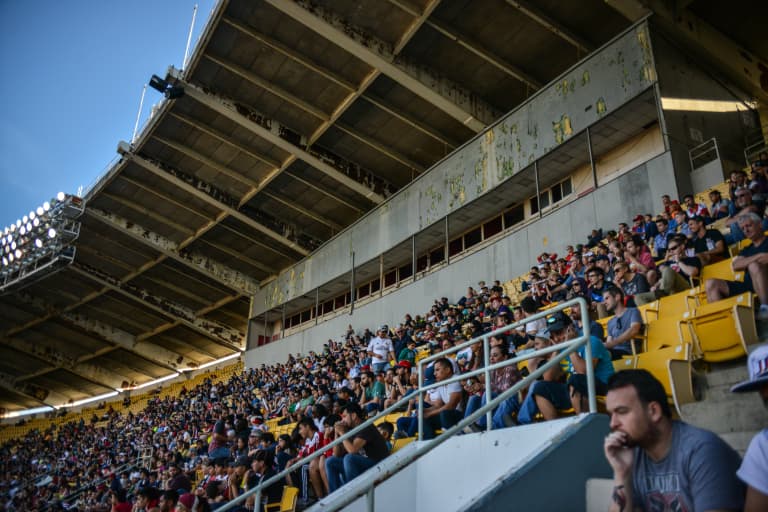
“The fans here really love this team and it’s about now creating an environment for them to really enjoy what this team is. And I think the new stadium will do that. I think it has a chance to really tilt D.C. United back to being a powerhouse within our league, like the old days.”
7:05 pm ET – RFK’s east touchline
The game has been over for an hour and the postgame tribute is complete, yet hundreds of dedicated D.C. supporters remain, eager for one last salute to their heroes, unwilling to let the day end just yet.
They’re particularly keen to bid farewell to Bill Hamid.
United’s Homegrown goalkeeper has been their brightest star for years now, rising from teenage phenom to national-team contender. But he won’t be minding the nets at Audi Field next year, having elected to play out his contract and try his hand in Europe, a longstanding personal goal of his.
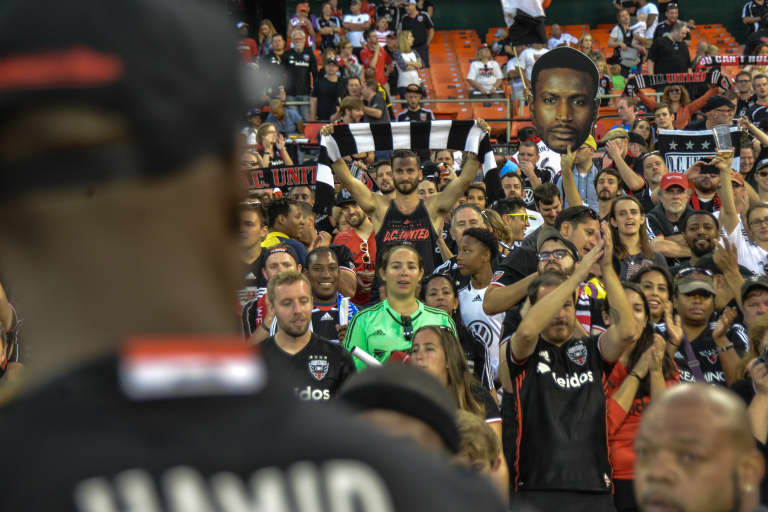
Hamid signed with Danish side FC Midtjylland earlier in the week and elected not to play on Sunday. It’s not the storybook goodbye the fans might have wanted. But they chant his name just the same, over and over until he approaches the loud side to pay his respects, sharing endless handshakes, high-fives and embraces.
“It’s unique. It’s got an old, funky vibe to it,” says Hamid of RFK. “The fans do their best to make it loud and we always see the stadium bouncing. It’s got an old, creaky feeling but you kind of appreciate that … I know everybody’s going to miss it.
“I certainly hope that one day when I do come back to MLS, I come back to D.C. United, I come back more educated, a stronger goalkeeper, a more refined goalkeeper with my technique and the way that I play, and I can help lead this team to a championship – something I’ve always wanted. I did win\] an [Open Cup but unfortunately that’s not MLS, that’s not a league title. I want to be able to say that I took this team to the White House.”
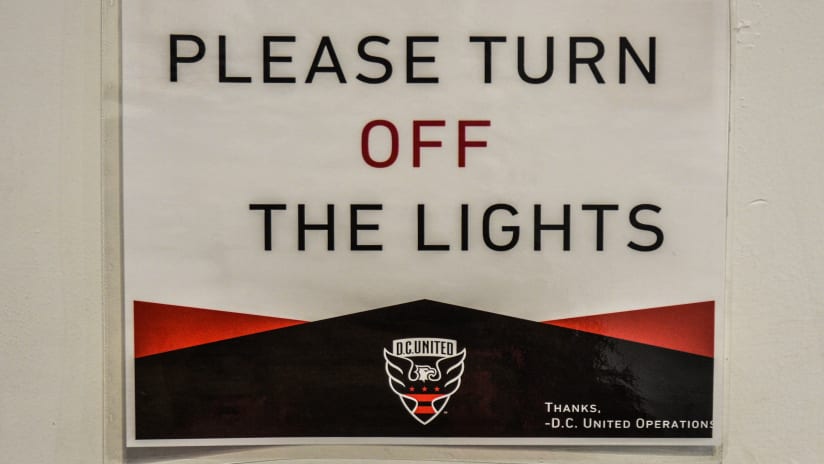
Audi Field is still under construction, and won’t be complete until sometime next summer. As crucial as that long-awaited venue is for United’s survival, no one is quite sure exactly how it will stack up to RFK – not yet. But the people that made the club what it is will do their best to carry on the old ways in the new house.
“This is a really big family,” says Payne. “I hope the people that are custodians of D.C. United today understand and appreciate that. Hopefully a new chapter of success will open with the opening of the new stadium.
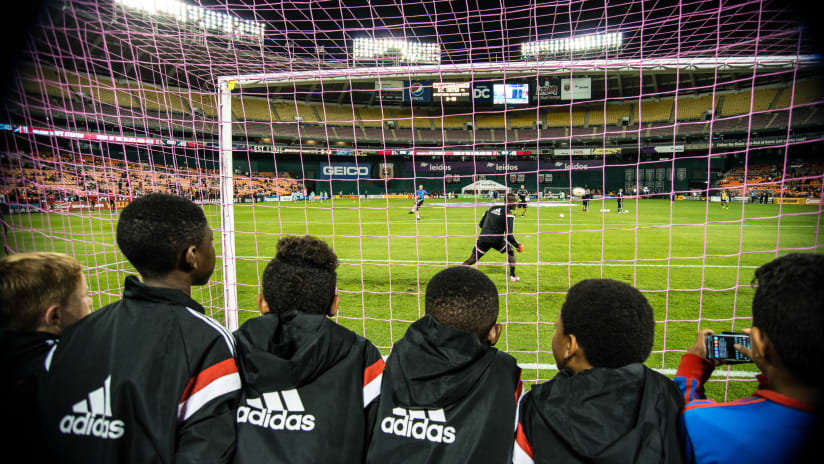
“It can have new elements and new nuances, but you have to work at it. It doesn't just happen. It doesn't happen by counting pennies – and it's not even entirely to do with winning. It helps to win, but it has to do with the way you treat people. If you value those things that are very difficult to measure, then I think the people that support your club and the people that work at your club start to value the same things. I really hope that the culture of D.C. United will continue and I hope that a new chapter will open with the new stadium.”

